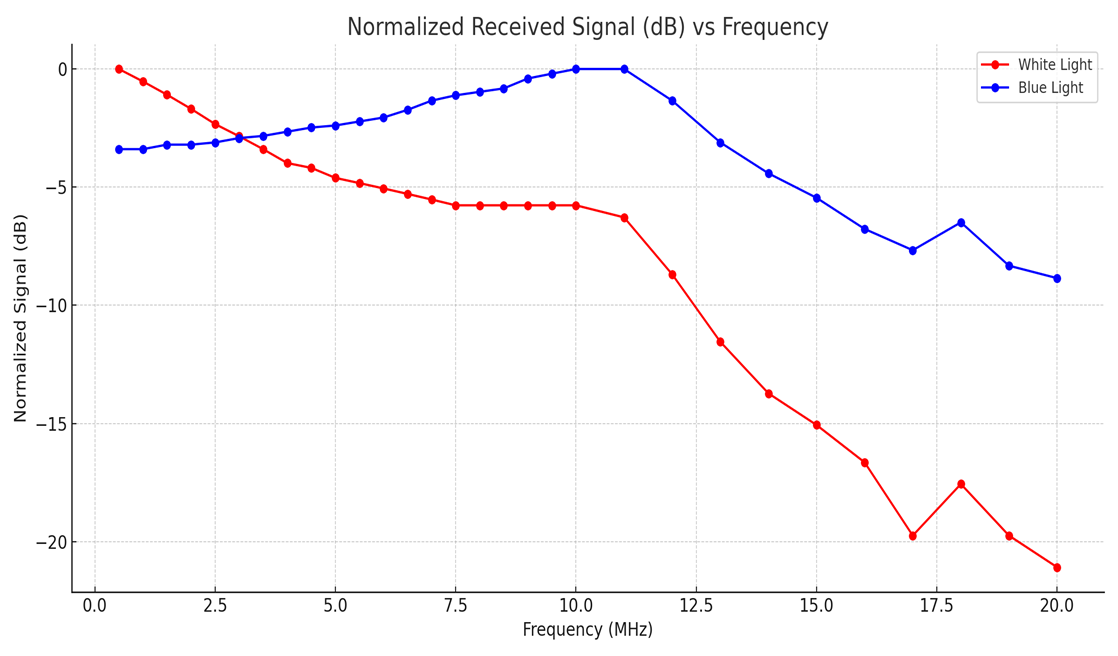Experimental Study on the Impact of Blue Filtering and Equalization in OOK-NRZ White LED Visible Light Communication Systems
Keywords:
Optical Filtering, Signal Equalization, Eye Diagram, Thermal Stability, Data ThroughputAbstract
Visible Light Communication (VLC) offers a high-bandwidth, energy-efficient, and license-free medium for wireless data transmission using white LEDs. However, performance is limited by the phosphor’s slow response and temperature sensitivity, which reduce modulation bandwidth and signal integrity. This study experimentally investigates improvements in a white LED-based VLC system using On-Off Keying Non-Return-to-Zero (OOK-NRZ) modulation through blue optical filtering and passive electronic equalization. The system was tested under data rates from 0.5–20 MHz and varying drive currents. A blue optical filter suppressed slow yellow phosphor components, while an R//C equalization circuit mitigated inter-symbol interference (ISI). Results show that blue filtering enhances high-frequency stability and extends modulation bandwidth, while equalization improves signal fidelity and eye diagram opening. Optimal performance was achieved at a driving current of 200 mA, balancing signal quality and thermal stability. These findings demonstrate that combining blue filtering and equalization provides an efficient, low-cost approach for improving data throughput and reliability in white LED-based VLC systems, enabling practical indoor communication and smart lighting applications.

Published
How to Cite
Issue
Section
How to Cite
Most read articles by the same author(s)
- Akinsanmi Akinbolati, Yusuf Isiaq Omotosho, Idris Adamu, Muftahu Suleiman, Sabiru Aminu Yaradua, Pathloss Assessment of a Terrestrial Digital UHF Channel over Kano City, Nigeria , Nigerian Journal of Physics: Vol. 33 No. S (2024): Nigerian Journal of Physics - Vol. 33(S)




